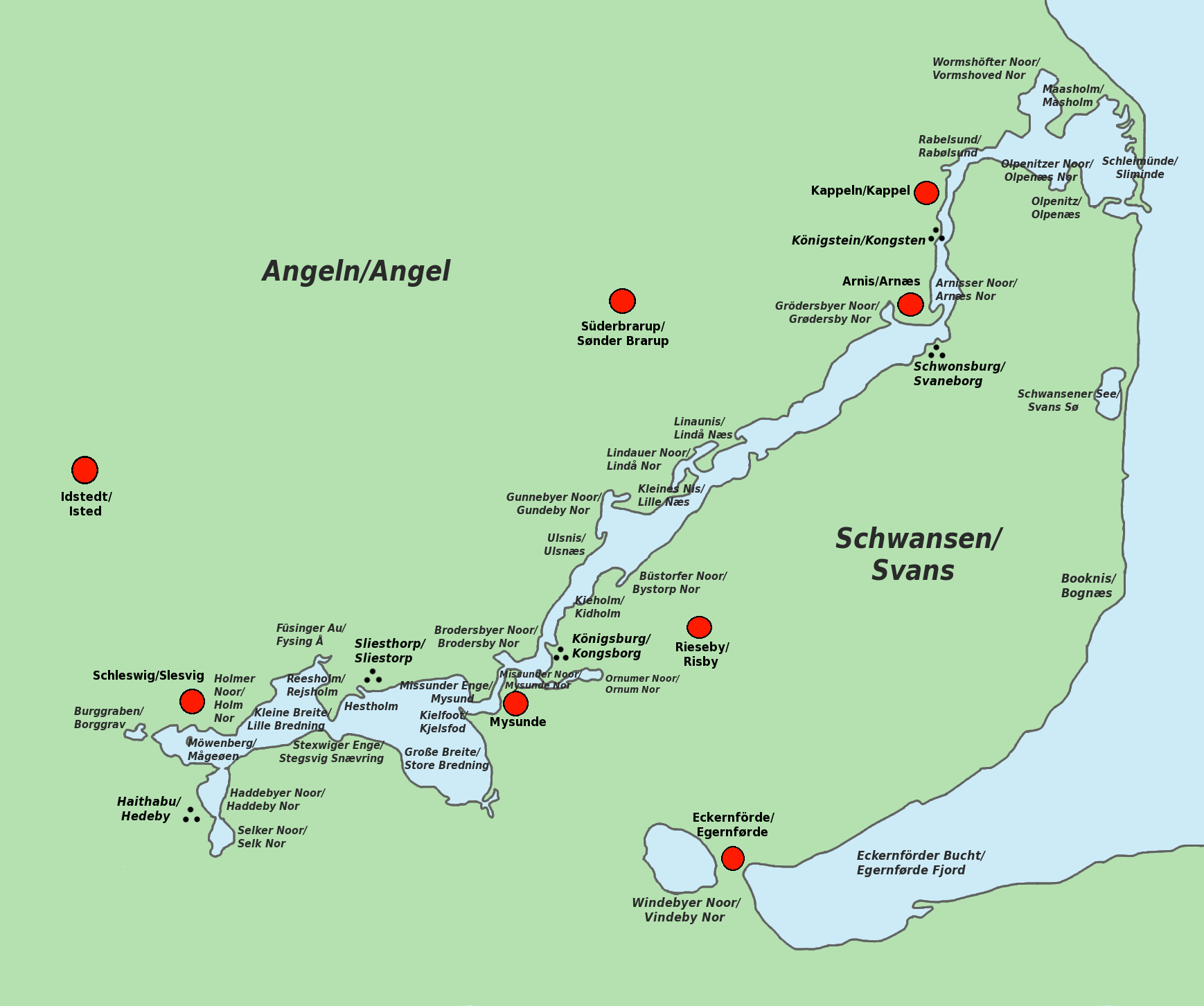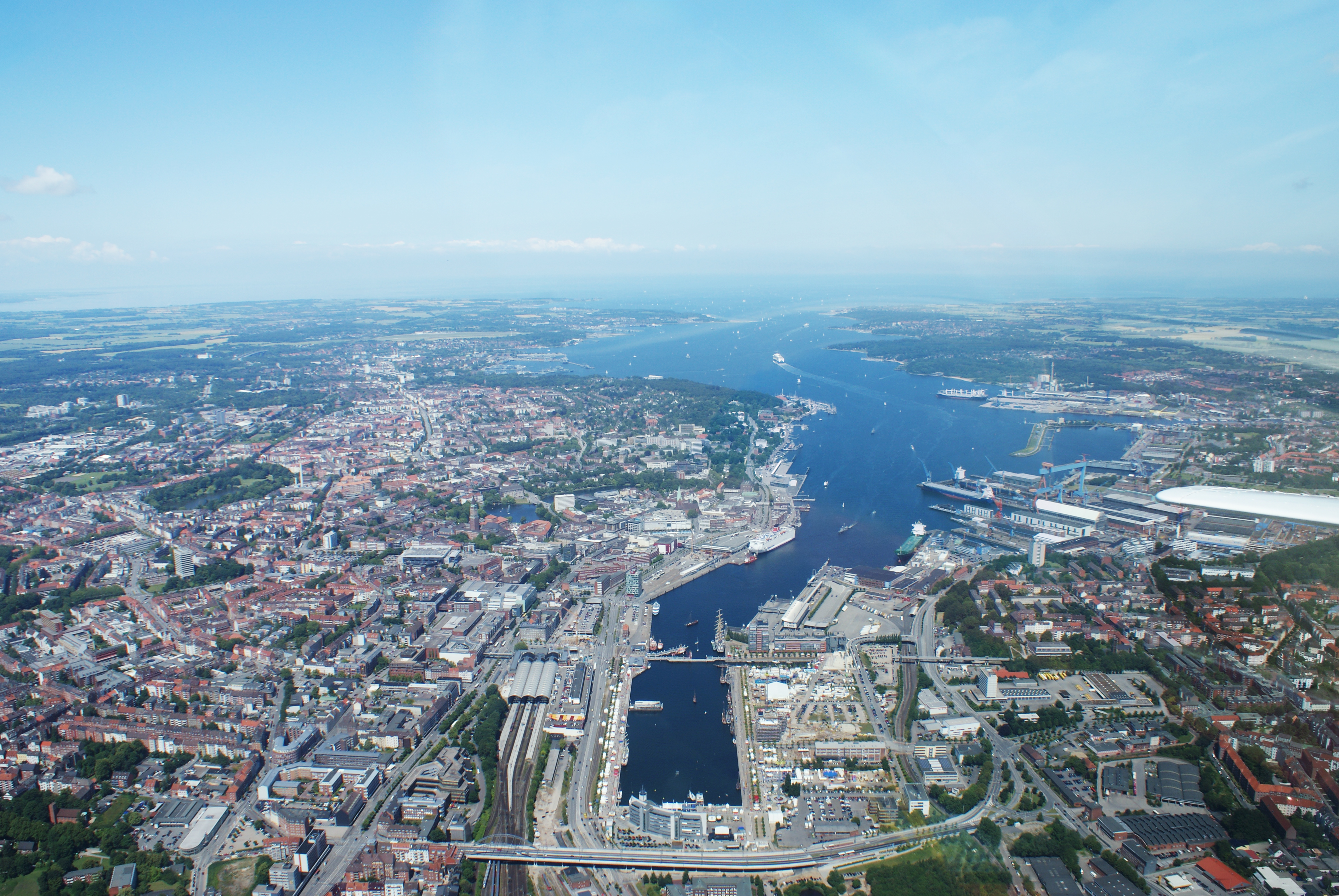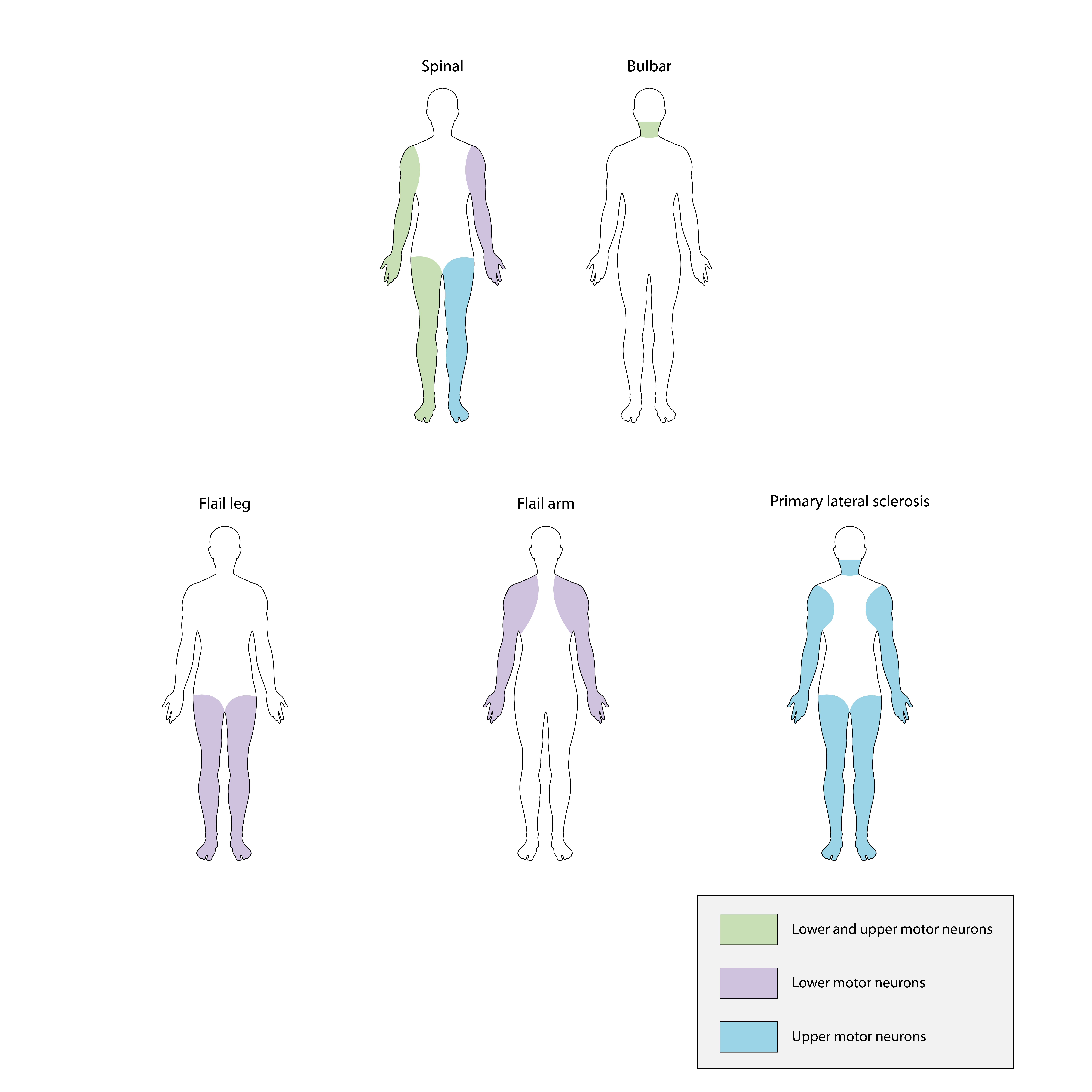|
Bay Of Kiel
The Bay of Kiel or Kiel Bay (, ; ) is a bay in the southwestern Baltic Sea, off the shores of Schleswig-Holstein in Germany and the islands of Denmark. It is connected with the Bay of Mecklenburg in the east, the Little Belt in the northwest, and the Great Belt in the North. Maritime traffic entering or leaving the Baltic through the two Belts must enter the bay. Once in, through traffic to the Baltic passes through another strait, the Fehmarn Belt, into the Bay of Mecklenburg, which opens out into the Baltic Sea. In the other direction, traffic can either pass northward through the Great Belt, keeping Langeland on the port side, or enter the Kiel Fjord and traverse the Kiel Canal directly to the mouth of the Elbe River and the North Sea. The Kiel Fjord ends at Kiel, the capital of Schleswig-Holstein. Geography The southwest shore of the bay is the coast of Schleswig-Holstein. From the latter drains the Schlei inlet, actually a brackish estuary, at the head of which i ... [...More Info...] [...Related Items...] OR: [Wikipedia] [Google] [Baidu] |
Schlei
The Schlei (; or e.g. in: Adolph Frederik Bergsøe: ''Den danske stats statistik'', Kjøbenhavn 1844, p. 156) is a narrow inlet of the Baltic Sea in Schleswig-Holstein in northern Germany. It stretches for approximately 20 miles (32 kilometers) from the Baltic near Kappeln and Arnis to the town of Schleswig. Along the Schlei are many small bays and swamps. It separates the Angeln peninsula to the north from the Schwansen peninsula to the south. The important Viking settlement of Hedeby was located at the head of the firth (fjord), but was later abandoned in favor of the town of Schleswig. A museum has been built on the site, telling the story of the abandoned town. Etymology The Schlei's name was once presumably ''Angel'',Wolfgang Laur: ''Historisches Ortsnamenlexikon von Schleswig-Holstein'', 2nd edition, Neumünster 1992. later giving its name to the region Angeln Angeln (; ) is a peninsula on the Baltic Sea, Baltic coast of Jutland, in the Bay of Kiel. It forms p ... [...More Info...] [...Related Items...] OR: [Wikipedia] [Google] [Baidu] |
Middle Ages
In the history of Europe, the Middle Ages or medieval period lasted approximately from the 5th to the late 15th centuries, similarly to the post-classical period of global history. It began with the fall of the Western Roman Empire and transitioned into the Renaissance and the Age of Discovery. The Middle Ages is the middle period of the three traditional divisions of Western history: classical antiquity, the medieval period, and the modern period. The medieval period is itself subdivided into the Early, High, and Late Middle Ages. Population decline, counterurbanisation, the collapse of centralised authority, invasions, and mass migrations of tribes, which had begun in late antiquity, continued into the Early Middle Ages. The large-scale movements of the Migration Period, including various Germanic peoples, formed new kingdoms in what remained of the Western Roman Empire. In the 7th century, North Africa and the Middle East—once part of the Byzantine Empire� ... [...More Info...] [...Related Items...] OR: [Wikipedia] [Google] [Baidu] |
Danes (Germanic Tribe)
The Danes were a North Germanic tribe inhabiting southern Scandinavia, including the area now comprising Denmark proper, northern and eastern England, and the Scanian provinces of modern-day southern Sweden, during the Nordic Iron Age and the Viking Age. They founded what became the Kingdom of Denmark. The name of their realm is believed to mean " Danish March", viz. "the march of the Danes", in Old Norse, referring to their southern border zone between the Eider and Schlei rivers, known as the Danevirke. Origins The origin of the Danes remains undetermined, but several ancient historical documents and texts refer to them and archaeology has revealed and continues to reveal insights into their culture, cultural beliefs, beliefs organization and way of life. A 2025 study in ''Nature'' found genetic evidence of an influx of central European population after about 500 AD into the region later ruled by the Danes. The Danes first appear in written history in the 6th century wit ... [...More Info...] [...Related Items...] OR: [Wikipedia] [Google] [Baidu] |
Saxons
The Saxons, sometimes called the Old Saxons or Continental Saxons, were a Germanic people of early medieval "Old" Saxony () which became a Carolingian " stem duchy" in 804, in what is now northern Germany. Many of their neighbours were, like them, speakers of West Germanic dialects, including the inland Franks and Thuringians to the south, and the coastal Frisians and Angles to the north who were among the peoples who were originally referred to as "Saxons" in the context of early raiding and settlements in Roman Britain and Gaul. To their east were Obotrites and other Slavic-speaking peoples. The political history of these continental Saxons is unclear until the 8th century and the conflict between their semi-legendary hero Widukind and the Frankish emperor Charlemagne. They do not appear to have been politically united until the generations leading up to that conflict, and before then they were reportedly ruled by regional "satraps". Previous Frankish rulers of Austrasia ... [...More Info...] [...Related Items...] OR: [Wikipedia] [Google] [Baidu] |
Vikings
Vikings were seafaring people originally from Scandinavia (present-day Denmark, Norway, and Sweden), who from the late 8th to the late 11th centuries raided, pirated, traded, and settled throughout parts of Europe.Roesdahl, pp. 9–22. They also voyaged as far as the Mediterranean Sea, Mediterranean, North Africa, the Middle East, Greenland, and Vinland (present-day Newfoundland in Canada, North America). In their countries of origin, and some of the countries they raided and settled in, this period is popularly known as the Viking Age, and the term "Viking" also commonly includes the inhabitants of the Scandinavian homelands as a whole. The Vikings had a profound impact on the Early Middle Ages, early medieval history of Northern Europe, northern and Eastern Europe, including the political and social development of England (and the English language) and parts of France, and established the embryo of Russia in Kievan Rus'. Expert sailors and navigators of their cha ... [...More Info...] [...Related Items...] OR: [Wikipedia] [Google] [Baidu] |
World War II
World War II or the Second World War (1 September 1939 – 2 September 1945) was a World war, global conflict between two coalitions: the Allies of World War II, Allies and the Axis powers. World War II by country, Nearly all of the world's countries participated, with many nations mobilising all resources in pursuit of total war. Tanks in World War II, Tanks and Air warfare of World War II, aircraft played major roles, enabling the strategic bombing of cities and delivery of the Atomic bombings of Hiroshima and Nagasaki, first and only nuclear weapons ever used in war. World War II is the List of wars by death toll, deadliest conflict in history, causing World War II casualties, the death of 70 to 85 million people, more than half of whom were civilians. Millions died in genocides, including the Holocaust, and by massacres, starvation, and disease. After the Allied victory, Allied-occupied Germany, Germany, Allied-occupied Austria, Austria, Occupation of Japan, Japan, a ... [...More Info...] [...Related Items...] OR: [Wikipedia] [Google] [Baidu] |
Holstein
Holstein (; ; ; ; ) is the region between the rivers Elbe and Eider (river), Eider. It is the southern half of Schleswig-Holstein, the northernmost States of Germany, state of Germany. Holstein once existed as the German County of Holstein (; 811–1474), the later Duchy of Holstein (; 1474–1866), and was the northernmost territory of the Holy Roman Empire. The history of Holstein is closely intertwined with the history of the Kingdom of Denmark, Danish Duchy of Schleswig (). The capital of Holstein is Kiel. Holstein's name comes from the Holcetae, a Saxons, Saxon tribe mentioned by Adam of Bremen as living on the north bank of the Elbe, to the west of Hamburg. The name means "dwellers in the wood" or "hill-sitters" (Northern Low Saxon: ; ). History Origins After the Migration Period of the Early Middle Ages, Holstein was adjacent to Obotrites, the Obotrites on the coast of the Baltic Sea and the land of the Danes in Jutland. With the conquest of Old Saxony by Charlemagne ... [...More Info...] [...Related Items...] OR: [Wikipedia] [Google] [Baidu] |
Kieler Förde
Kieler Förde is an inlet of the Baltic Sea, approximately long, on the eastern side of Schleswig-Holstein, Germany. Formed by glacier, glacial movement during the Last Glacial Period, last ice age, it divides Danish Wold peninsula from Wagria. Like the other Förden and East Jutland Fjorde, inlets of förde-type, geologically it is not a fjord. It originates at the Hörn in centre-city Kiel and merges into the Bay of Kiel. The eastern terminus of the Kiel Canal is located along Kiel Förde leading into the Port of Kiel. At its narrowest point, the "Friedrichsorter Enge", the fjord is only one kilometre wide. The river Schwentine enters Kieler Förde near Kiel-Dietrichsdorf. Locations Locations along the Kieler Förde: Western shore From north to south: * Bülk (Bülk Lighthouse) * Strande (fishery and sporting harbor) * Kiel-Schilksee (Olympic harbor) * Falckenstein, Schleswig-Holstein, Falckenstein (Kiel's duty-free beach) * Kiel-Friedrichsort (traditionsreicher Indust ... [...More Info...] [...Related Items...] OR: [Wikipedia] [Google] [Baidu] |
Ærø
Ærø () is one of the Denmark, Danish Baltic Sea islands, and part of the Region of Southern Denmark, Southern Denmark Region. Since 1 January 2006 all of Ærø has constituted a single Municipalities of Denmark, municipality, known as Ærø Municipality, Ærø Kommune. Before that date, there were two municipalities on the island: Ærøskøbing Municipality, Ærøskøbing Kommune in the west and Marstal Municipality, Marstal Kommune in the east. This merger was part of a reform of the public sector with the laws being effective as of 26 June 2005. This merger was allowed to happen one year before the other municipalities merged as there had already been an island-wide referendum with a majority of voters for the merger. In a 2010 survey, readers of the Danish newspaper ''Kristeligt Dagblad'' voted Ærø as Denmark's third most wonderful island, behind only Fur (island), Fur and Læsø. Geography * Population (in 2020): 5,956 (island of Ærø only);5,964 (municipality). * A ... [...More Info...] [...Related Items...] OR: [Wikipedia] [Google] [Baidu] |
Als Island
Amyotrophic lateral sclerosis (ALS), also known as motor neuron disease (MND) or—in the United States—Lou Gehrig's disease (LGD), is a rare, Terminal illness, terminal neurodegenerative disease, neurodegenerative disorder that results in the progressive loss of both upper and lower motor neurons that normally control Skeletal muscle, voluntary muscle contraction. ALS is the most common form of the motor neuron diseases. ALS often presents in its early stages with gradual muscle Spasticity, stiffness, Fasciculation, twitches, Muscle weakness, weakness, and Muscle atrophy, wasting. Motor neuron loss typically continues until the abilities to eat, speak, move, and, lastly, breathe are all lost. While only 15% of people with ALS also fully develop frontotemporal dementia, an estimated 50% face at least some minor difficulties with cognitive disorder, thinking and behavior. Depending on which of the aforementioned symptoms develops first, ALS is classified as ''limb-onset'' (b ... [...More Info...] [...Related Items...] OR: [Wikipedia] [Google] [Baidu] |
Flensburg Fjord
Flensburg Firth or Flensborg Fjord (; ) is the westernmost inlet of the Baltic Sea. It forms part of the border between Germany to the south and Denmark to the north, on the eastern side of Schleswig-Holstein, Schleswig Holstein and Jutland, respectively. Its length is between , depending on where it is considered to begin. It has the largest area of all the Förden and East Jutland Fjorde, fjords of East Jutland, which are a special type of inlet, different from geological fjords.''Sailing Directions (Enroute). Baltic Sea (Southern Part)'' (Annapolis, MD: Lighthouse Press, 12th ed. 2007), p. 82 Two peninsulas, Broager Peninsula, Broager on the northern side and Holnis on the southern side, divide the inlet into an outer and an inner part. West of them, near the Danish coast, there are two small islands called Okseøerne (meaning ''Ox Isles''). On the Danish side, the outer part of the northern end of the firth is partly closed off by the island of Als Island, Als, with the town ... [...More Info...] [...Related Items...] OR: [Wikipedia] [Google] [Baidu] |








